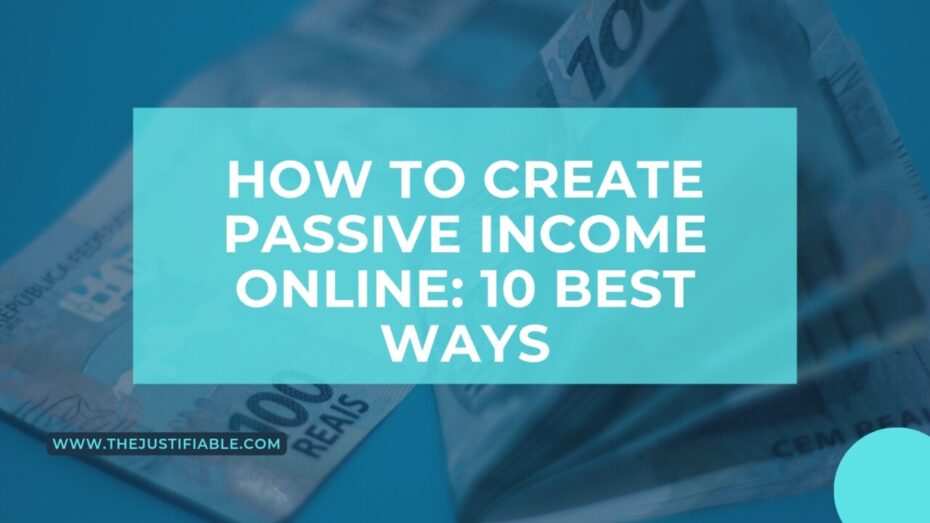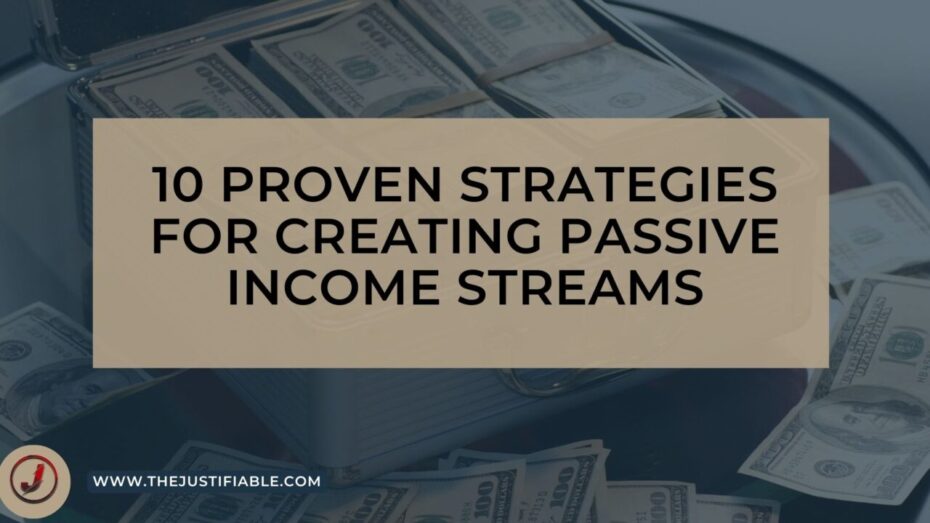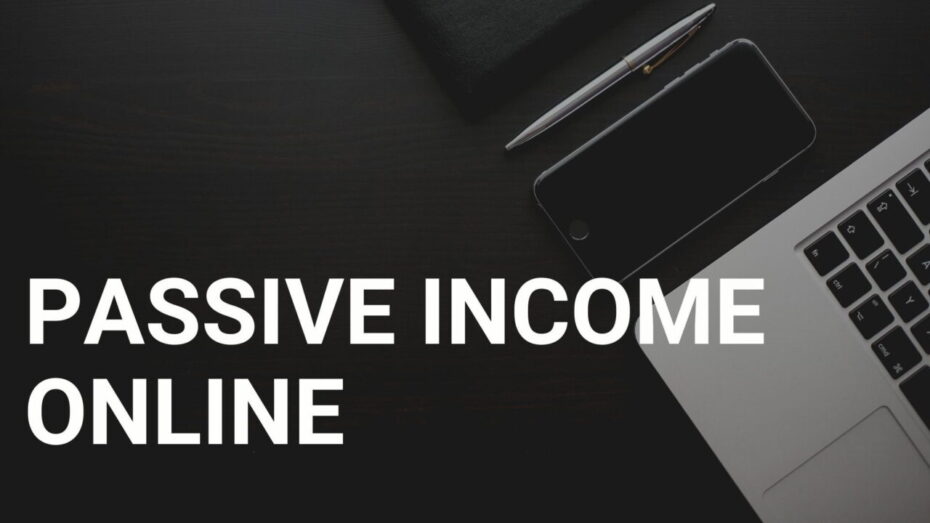Disclosure: This post contains affiliate links, which means that if you click on them and make a purchase, I will receive a commission. Read our Disclaimer for More.
How to create passive income online? Creating passive income online is a great way to earn money without having to actively work for it. With the rise of the internet and online platforms, there are now more opportunities than ever to create passive income streams.
Here are 10 ways on how to create passive income online:
1. Affiliate Marketing Passive Income


Affiliate marketing is a great way to make passive income online. It involves promoting someone else’s products or services and earning a commission on each sale you generate. Here are some steps you can take to make passive income with affiliate marketing:
Choose a Niche – The first step in making passive income with affiliate marketing is to choose a niche. A niche is a specific topic or area of interest that you will focus on. It’s important to choose a niche that you are passionate about and that has a large audience.
Choose an Affiliate Program – Once you have chosen a niche, the next step is to choose an affiliate program. There are many affiliate programs available, such as ShareASale, Awin, MyLead, and Fiverr Affiliate. Choose a program that offers products or services that are relevant to your niche.
Build a Website or Blog – To promote your affiliate products, you need to build a website or blog. This website will be your platform to share your knowledge and promote your affiliate products. You can use platforms like WordPress or Wix to build a website quickly and easily.
Create Content – Once your website is built, the next step is to create content. This can include blog posts, videos, podcasts, or social media posts. Your content should provide value to your audience and promote your affiliate products in a subtle way.
Drive Traffic – To make passive income with affiliate marketing, you need to drive traffic to your website. This can be done through search engine optimization (SEO), social media, paid advertising, or other methods. The more traffic you can drive to your website, the more potential sales you can generate.
Build an Email List – One of the most effective ways to make passive income with affiliate marketing is to build an email list. This allows you to send targeted promotions to your subscribers and generate sales on autopilot.
Track Your Results – To maximize your earnings, it’s important to track your results. This can include monitoring your website traffic, conversion rates, and earnings. This information will help you optimize your campaigns and improve your results over time.
2. Create a Niche Website


Creating a niche website is a great way to build an online business and generate passive income. A niche website is a website that focuses on a specific topic or subject, catering to a particular audience.
Niche websites are usually more successful than general websites because they provide valuable content to a specific group of people. Here are the steps you can follow to create a successful niche website.
Choose a Niche: The first step in creating a niche website is to choose a niche. A niche is a specific topic or subject that you want to focus on. To choose a niche, consider your interests, expertise, and passions.
Look for niches that have a sizable audience, but not too much competition. You can use tools like Google Trends, Keyword Planner, and BuzzSumo to find popular and trending topics.
Research Your Competition: Once you’ve chosen your niche, research your competition. Find out who your competitors are, what their websites look like, what content they publish, and how they monetize their websites. This will help you understand your niche better and find ways to differentiate your website from your competitors.
Choose a Domain Name: Choose a domain name that is relevant to your niche and easy to remember. Make sure that your domain name is not too long and does not contain any confusing characters. You can use domain name generators like Namecheap and GoDaddy to find available domain names.
Select a Web Hosting Service: Select a web hosting service that suits your needs and budget. Consider factors like speed, uptime, security, and customer support. You can use hosting services like Hostinger, HostGator, and UltraWebHosting to host your website.
Design Your Website: Design your website with your audience in mind. Make sure that your website is easy to navigate, visually appealing, and responsive on all devices. Use colors, fonts, and images that match your niche and branding.
Create Quality Content: Create quality content that is relevant to your niche and provides value to your audience. Use your research to identify topics that your audience is interested in and create informative and engaging content. You can create blog posts, videos, podcasts, infographics, and other types of content.
Optimize Your Website for SEO: Optimize your website for search engines by using relevant keywords, meta tags, and descriptions. Use SEO plugins like All in One SEO to improve your website’s SEO performance.
Promote Your Website: Promote your website on social media, forums, and other online platforms to attract traffic and build your audience. Use email marketing, paid advertising, and influencer marketing to promote your website and reach a wider audience.
Monetize Your Website: Monetize your website by using various methods like advertising, affiliate marketing, sponsored content, and digital products. Choose the monetization method that suits your niche and audience.
3. Passive Income Through Email Marketing
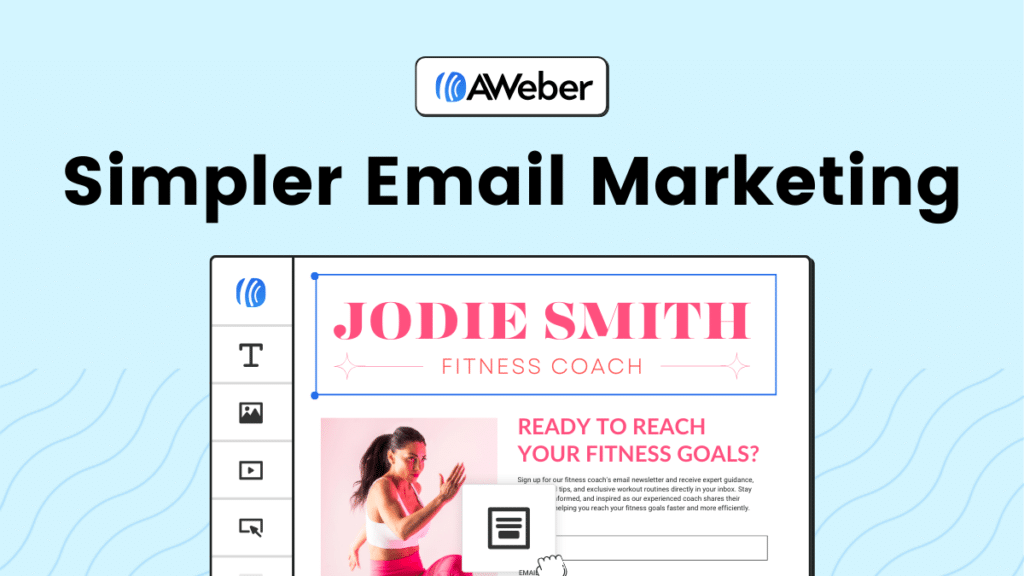

When it comes to generating a consistent stream of income, few digital strategies can rival the power of email marketing. While often perceived as an older form of online communication, especially when compared to social media platforms, email remains one of the most effective channels for nurturing relationships and converting subscribers into customers.
Understanding the concept of passive income, which is essentially earnings derived from little to no effort on the part of the recipient, might initially seem at odds with email marketing. After all, setting up an effective email marketing campaign requires effort, right? Absolutely. But once established, these campaigns can function almost autonomously.
Why Email Marketing is Effective for Passive Income:
To start, an email list is a direct line to an audience that has already shown interest in a brand, product, or service. This level of engagement typically results in higher conversion rates than cold outreach methods.
Moreover, with modern email automation tools, one can schedule and segment their campaigns to ensure that the right message reaches the right person at the right time. This means after the initial setup and periodic maintenance, the emails practically send themselves.
Monetizing email lists can be achieved in several ways. Some businesses use them to promote their products or services, while others might collaborate with partners for affiliate marketing deals. Either way, the potential for generating sales while asleep (the epitome of passive income) becomes a tangible reality.
4. Start a Dropshipping Store
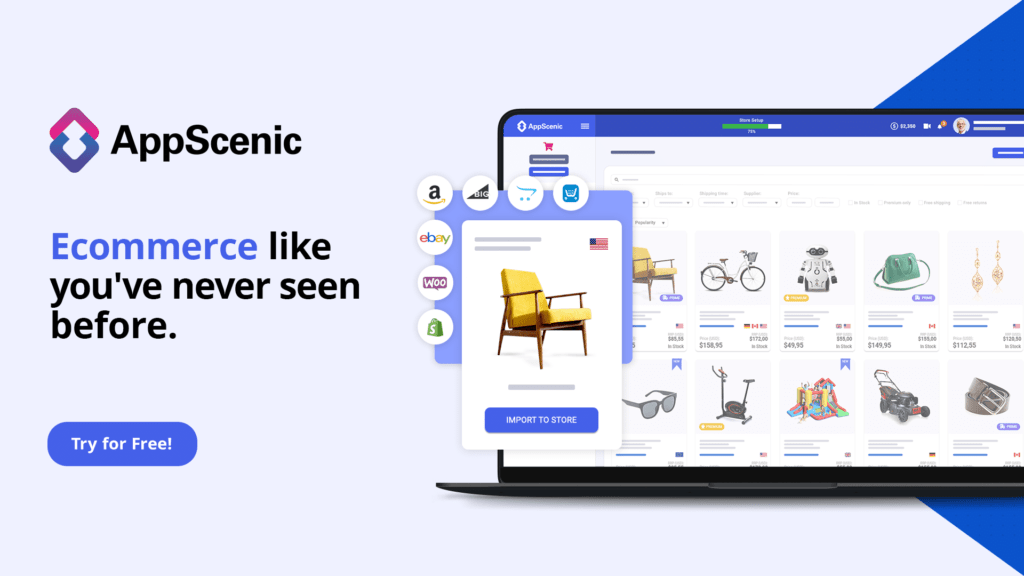

Entering the world of e-commerce might seem daunting, especially when considering the intricacies of inventory management, shipping, and customer service. However, dropshipping alleviates many of these burdens, offering budding entrepreneurs a chance to dip their toes into the online retail space with reduced risk.
Dropshipping is a business model where the store owner doesn’t hold the products they sell in stock. Instead, when a customer places an order, the product is purchased from a third-party supplier who then ships it directly to the customer. The store owner never sees or handles the product, acting essentially as a middleman.
Benefits of Dropshipping as a Source of Passive Income:
The primary allure of dropshipping is the lower upfront cost. Traditional retail requires purchasing large amounts of inventory, which can be financially taxing and carries the risk of unsold goods. With dropshipping, you only purchase a product when you have an existing order to fill.
Additionally, since the logistics of storage and shipping are handled by third-party suppliers, this reduces overheads and operational complexities. Once systems are in place and the store gains traction, it can, to a large extent, run itself. By using automated tools and plugins, order processing can be streamlined, making the business relatively hands-off.
5. Earn Passive Income as a Freelancer
Freelancing, by its very nature, might not seem like a direct route to passive income. After all, most freelancers exchange their time and skills for money. However, with a shift in perspective and a strategic approach, freelancers can indeed harness opportunities for passive income.
Creating Valuable Assets:
One of the primary ways freelancers can achieve this is by turning their expertise into sellable assets. For example, a graphic designer might create templates or design packs that customers can purchase and use multiple times. A writer might pen an e-book or offer a course on content creation. These products, once created, can be sold repeatedly without the freelancer having to redo the work.
Leveraging Client Relationships:
Another avenue for passive income as a freelancer is through retainer contracts or maintenance agreements. For instance, a web developer might design a website for a client and then offer monthly maintenance or updates for a recurring fee. While some work will still be required, it’s predictable and offers a consistent stream of income.
Affiliate marketing can also be integrated into a freelancer’s strategy. Recommending tools, products, or services to clients and earning a commission on sales can supplement income without necessitating additional work.
6. Create an Online Course For Passive Income


Creating an online course is another great way to earn passive income online. Online courses can be created once and sold multiple times, allowing you to earn money from the same course over and over again. Here are the steps to create an online course for passive income:
Choose a Topic – The first step is to choose a topic for your course. It should be something that you are knowledgeable and passionate about, and that has demand in the market. You can conduct market research to find out what people are looking for in your niche.
Define Your Target Audience – Once you have chosen a topic, define your target audience. This will help you create a course that is tailored to their needs and interests.
Outline Your Course – Before creating your course content, create an outline of the modules and lessons you will cover. This will help you stay organized and focused throughout the process.
Create Your Course Content – Now it’s time to create your course content. This can include videos, text, audio, quizzes, and other types of content. Make sure your content is high-quality, engaging, and provides value to your students.
Choose a Platform – There are many platforms available for hosting and selling online courses, such as Udemy, Datacamp, and Udacity. Choose a platform that fits your needs and budget.
Set a Price – Determine the price of your course based on the value you provide and the prices of similar courses in the market. Consider offering discounts or promotions to attract more students.
Launch Your Course – Once your course is complete, it’s time to launch it. Promote it on your website, social media, and other channels. Consider offering a free trial or preview to attract more students.
Monitor Your Results – Monitor your course’s performance and adjust your marketing and pricing strategies accordingly. Collect feedback from your students and use it to improve your course.
7. Create a Membership Site
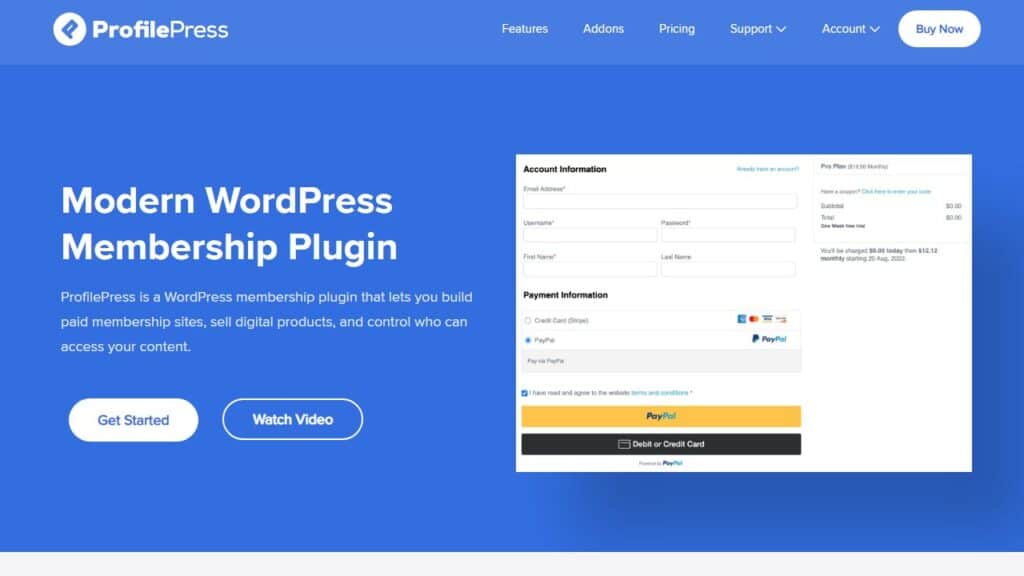

Creating a membership site can be a great way to earn passive income online. By creating a site where people can pay a monthly or annual fee to access exclusive content or services, you can earn passive income each month.
Choose a Niche: The first step is to choose a niche for your membership site. This should be something that you are knowledgeable and passionate about, and that has demand in the market.
Here are the steps to create a membership site:
Define Your Membership Levels: Once you have chosen a niche, define your membership levels. This can include free, basic, and premium levels, each with different features and benefits.
Create Your Content: Now it’s time to create your membership content. This can include videos, articles, podcasts, webinars, and other types of content. Make sure your content is high-quality, engaging, and provides value to your members.
Choose a Membership Platform: There are many platforms available for hosting and managing membership sites, such as MemberPress, Memberful, and Restrict Content Pro. Choose a platform that fits your needs and budget.
Set Up Your Payment Gateway: Set up a payment gateway to accept payments from your members. This can include PayPal, Stripe, or other payment processors.
Design Your Membership Site: Design your membership site to reflect your brand and the needs of your members. Consider using a professional theme or hiring a designer to create a custom design.
Launch Your Membership Site: Once your site is complete, it’s time to launch it. Promote it on your website, social media, and other channels. Consider offering a free trial or preview to attract more members.
Engage with Your Members: Engage with your members regularly by providing value, answering questions, and responding to feedback. Consider hosting live Q&A sessions or webinars to build engagement and community.
Monitor Your Results: Monitor your membership site’s performance and adjust your marketing and pricing strategies accordingly. Collect feedback from your members and use it to improve your content and engagement.
8. Create a YouTube Channel And Earn Passive Income
Creating a YouTube channel is another great way to earn passive income online. Once your channel has enough subscribers and views, you can earn money from advertising revenue, sponsorships, and merchandise sales.
Here are the steps to create a YouTube channel for passive income:
Choose a Niche – The first step is to choose a niche for your YouTube channel. This should be something that you are knowledgeable and passionate about, and that has demand in the market.
Create High-Quality Content – Now it’s time to create high-quality content for your YouTube channel. This can include videos, tutorials, reviews, and other types of content. Make sure your content is engaging, informative, and provides value to your viewers.
Optimize Your Videos for Search – Use search engine optimization (SEO) techniques to optimize your videos for search engines. This can include using relevant keywords in your video titles, descriptions, and tags.
Promote Your Videos – Promote your videos on social media, your website, and other channels to attract more viewers. Consider collaborating with other YouTubers or influencers in your niche to expand your reach.
Monetize Your Channel – Once your channel has gained a following, you can start monetizing it. This can include placing ads on your videos, partnering with brands for sponsored content, or selling products or services related to your niche.
Build a Community – Engage with your viewers by responding to comments, hosting Q&A sessions, and creating a sense of community around your channel. This can help you build a loyal following and increase engagement.
Analyze Your Performance – Use YouTube analytics to monitor your channel’s performance and adjust your strategies accordingly. This can include experimenting with different types of content, testing different promotional channels, and analyzing your audience demographics and behavior.
9. Sell Digital Products
Selling digital products like e-books, templates, and software can be a great way to earn passive income online. Once the product is created, it can be sold multiple times, allowing you to earn money from the same product over and over again. Here are the steps to sell digital products online:
Choose a Niche: The first step is to choose a niche for your digital products. This can include e-books, courses, software, templates, music, or any other type of digital product. Make sure your niche is in demand and there is a market for it.
Create Your Digital Product: Once you have chosen your niche, it’s time to create your digital product. This can include writing an e-book, recording a course, designing templates, or developing software. Make sure your product is high-quality and provides value to your customers.
Set Up Your Online Store: Next, you’ll need to set up your online store to sell your digital products. You can use e-commerce platforms like Shopify, WooCommerce, or Gumroad to create an online store and sell your products. Make sure your online store is easy to navigate and has a secure payment gateway.
Market Your Products: Once your online store is set up, it’s time to market your products. You can use social media, email marketing, influencer marketing, and other digital marketing techniques to promote your products and reach a wider audience.
Offer Discounts and Promotions: Offering discounts and promotions can help you attract more customers and increase sales. You can offer limited-time discounts, bundle deals, or referral discounts to encourage customers to purchase your products.
Provide Excellent Customer Service: Providing excellent customer service is crucial to building a loyal customer base. Make sure you respond to customer inquiries promptly and provide solutions to their problems. You can also offer customer support through email, phone, or live chat.
Analyze Your Performance: Use analytics tools to monitor your sales performance and customer behavior. This can help you identify areas for improvement and adjust your strategies accordingly.
10. Create a Mobile App
Creating a mobile app is another great way to earn passive income online. Once the app is created and released, it can generate income from in-app purchases, advertising, and subscription fees.
Creating a mobile app can be a great way to reach a wider audience and provide value to your customers. Here are the steps to create a mobile app:
Step 1: The first step is to determine the purpose of your app and who your target audience is. This will help you create a mobile app that meets the needs of your users.
Step 2: Next, you’ll need to choose the platform you want to build your app for. This can include iOS, Android, or both. Each platform has its own development requirements and tools, so make sure you choose the one that’s right for you.
Step 3: Once you’ve chosen your platform, it’s time to design your app. You can use wireframing and prototyping tools to create a visual design of your app. Make sure your app design is user-friendly, intuitive, and visually appealing.
Step 4: After designing your app, it’s time to develop it. You can use programming languages like Java, Swift, or Kotlin to code your app. Alternatively, you can use app builders like Appy Pie or BuildFire to create your app without coding.
Step 5: Once your app is developed, it’s important to test it thoroughly to ensure it works properly. You can use testing tools like TestFlight or Google Play Console to test your app on real devices and get feedback from users.
Step 6: After testing your app, it’s time to submit it to the app store. You’ll need to follow the submission guidelines of the app store you’re submitting your app to. This can include providing app descriptions, screenshots, and icons.
Step 7: Once your app is live on the app store, it’s important to promote it to attract users. You can use digital marketing techniques like social media, email marketing, influencer marketing, and paid advertising to promote your app and reach a wider audience.

